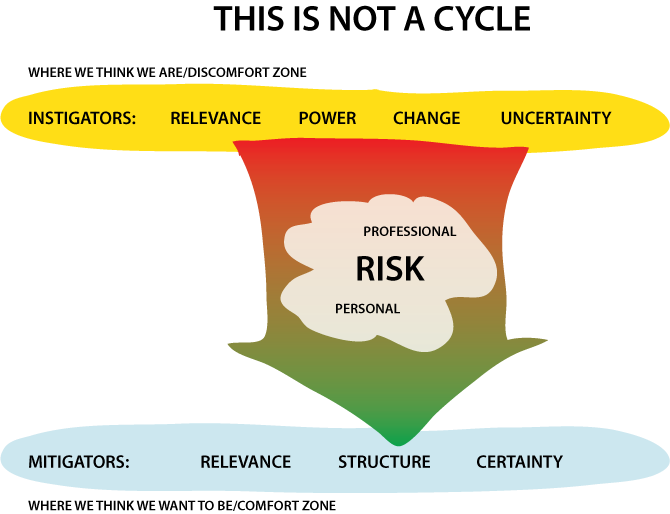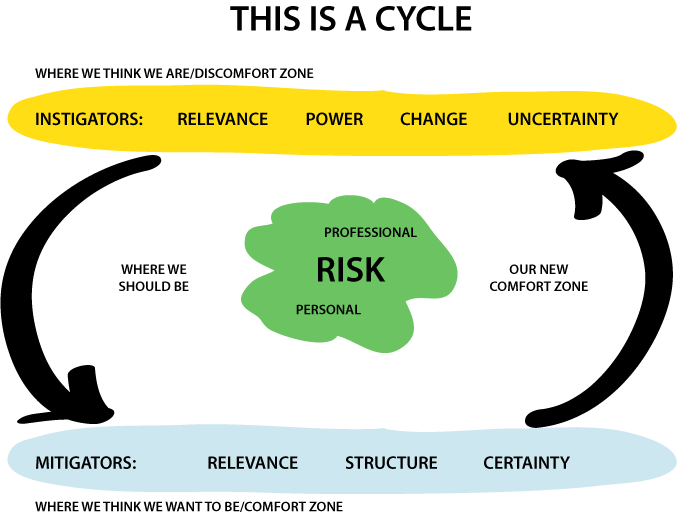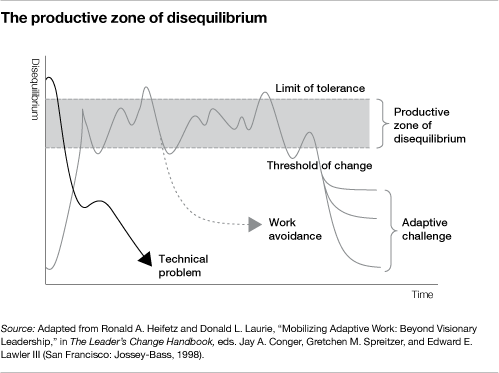Building on several conversations I’ve had over the last year around the evolution of organizations – and companies, it’s people I’m really talking about here – I tried to illustrate the evolving picture of what is coming together for me.
First off, the word of the day for me is “risk”. We use all kinds of words to talk and dance around risk – how we deal with it, how we try to avoid it, how we acknowledge it, and how we want to be able to live with it, and even be able to embrace it.
We look at systems, power dynamics, change, structure, tools, relationships (among a nearly infinite list of terms) as ways to identify risk, and as ways to deal with risk. But the first impression I got was that we (the royal we) are trying replace one set of conditions with another, which doesn’t sound right. A system, however tweaked, is still a system. The end result may not be all that different than the starting point.

What I kept observing was that the mitigating words sounded a lot like the instigating ones. Meaning that the perceived problem and the perceived solution didn’t end up looking very different from one another.
What remains unmodified, is the big fat ‘risk’ at the center. The linear model goes around it. It may chip at it. But the risk will still exist. Structures and systems, by their definition, are parameterized, and parameters are usually perimeters, lines that divide. Somebody will end up outside the perimeter.
But what if we accept that risk is the constant? What if we borrow from the discomfort/comfort zones, and learn to be comfortable in the risk area? How can we work within the risk zone?

To try and put some structure around this, I have been resorting to concepts like adaptive leadership, the discipline where the risk zone is navigated to get the most out of people and organizations without either slipping into chaos or paralysis.

Should “Risk” be added to our list of principles? I’d love to hear from you about this.
For anybody who wants to get a quick overview of adaptive leadership and the concepts illustrated in the productive zone of disequilibrium image, see https://docs.google.com/file/d/0B5TYxgYY5MuLSGUzeEZBbDdUTWM/edit